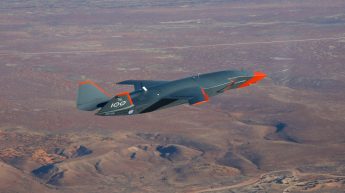
A government and industry partnership in New Zealand has completed test flights for the integration of uncrewed aircraft flying beyond visual line of sight (BVLOS) into controlled airspace.
The “first of its kind” trial, led by Wisk Aero and including RPAS operator Insitu Pacific, the NZ Civil Aviation Authority (CAA), ATC operator Airways NZ, and Indigenous-led aerospace venture Tāwhaki, incorporated take-offs, landings, and navigation through controlled and uncontrolled airspace.
Taking place between 17 November and 1 December, the flights from the Tāwhaki National Aerospace Centre at Kaitorete aimed to demonstrate that remotely piloted aircraft can be safely operated under instrument flight rules (IFR) in controlled airspace alongside regular crewed traffic.
“The successful completion of this phase of testing demonstrates that it is possible to safely integrate autonomous aircraft into controlled airspace that is shared with piloted aircraft,” said Catherine MacGowan, Wisk’s vice president of APAC and air operations.
“The processes, data, and learnings from these trial flights will help shape the future of Advanced Air Mobility (AAM) and the broader aviation industry.”
CAA’s deputy chief executive of aviation safety, David Harrison, hailed the tests as a milestone for RPAS safety.
“CAA is committed to the safe and secure integration of emerging technologies into the civil aviation system in New Zealand,” he said.
“It’s a promising step forward for the whole sector that these trials have progressed safely, which is our number one priority.”
Currently in Australia, drones weighing more than 250g cannot be flown within 5.5km of a controlled airport, while micro drones weighing less than 250g can be used within 5.5km, but only to a height of 45 metres.
All drones, however, can operate within the outer runway splays of a controlled airport up to a height of 90 metres, while licenced and certified operators can apply to CASA for permission to operate within 5.5 kilometres and in approach/departure paths of controlled airports.
When an airport is not controlled, such as at a helicopter landing site or smaller aerodrome without a tower, drones may be flown within 5.5km, but operators must manoeuvre away and land as quickly and safely as possible if they become aware of crewed aircraft nearby.
CASA has recently launched a major drone safety campaign in the lead-up to Christmas.















